A heartbeat, heard from a distance
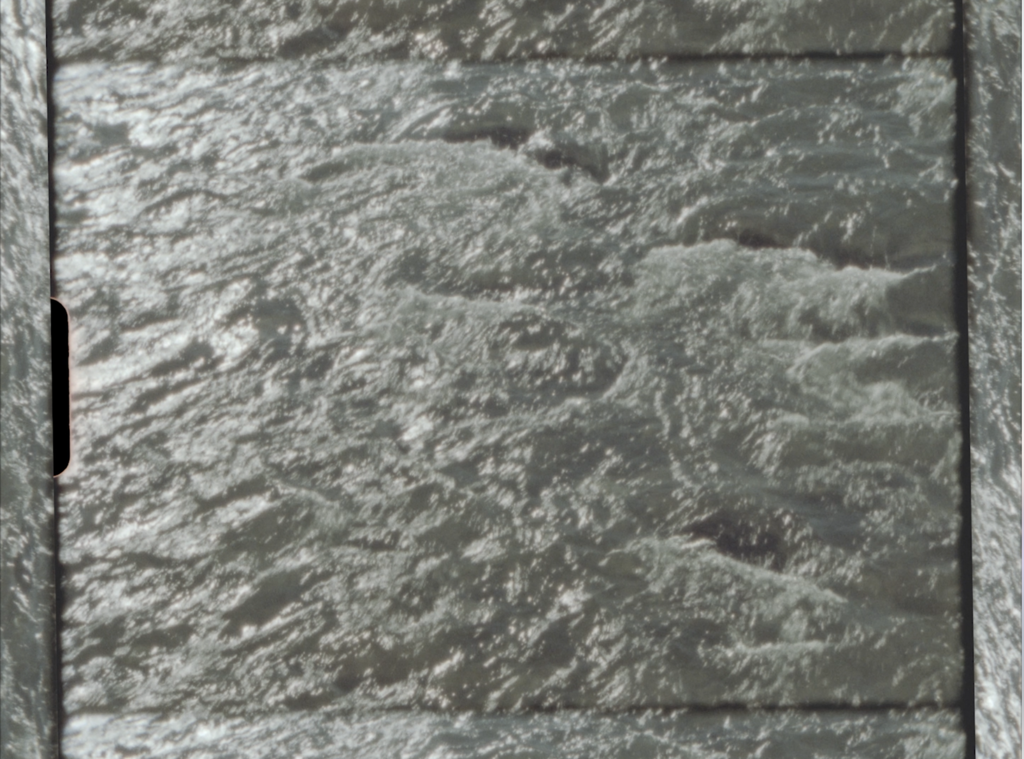
Maggie Carson Romano’s Essay in response to Chantal Anderson’s exhibit ‘Rivers’
Images by Chantal Anderson
From the entryway of Vignettes, I was met with sounds of rushing water and far off, a distant drumming, which as I entered the room, revealed itself as a heartbeat, collapsing the space I had begun to imagine. We know, inherently, that a heartbeat is never heard from a distance. The sound then shifted back to the rushing of water as my eyes focused on the light source in the room, a video projection of an almost kaleidoscopic, shifting gaze of rushing water. The frame rested my view up river and framed it with channels of water flowing backward at its edges, the perspective occasionally shifting me closer to the water. The heartbeat returned.
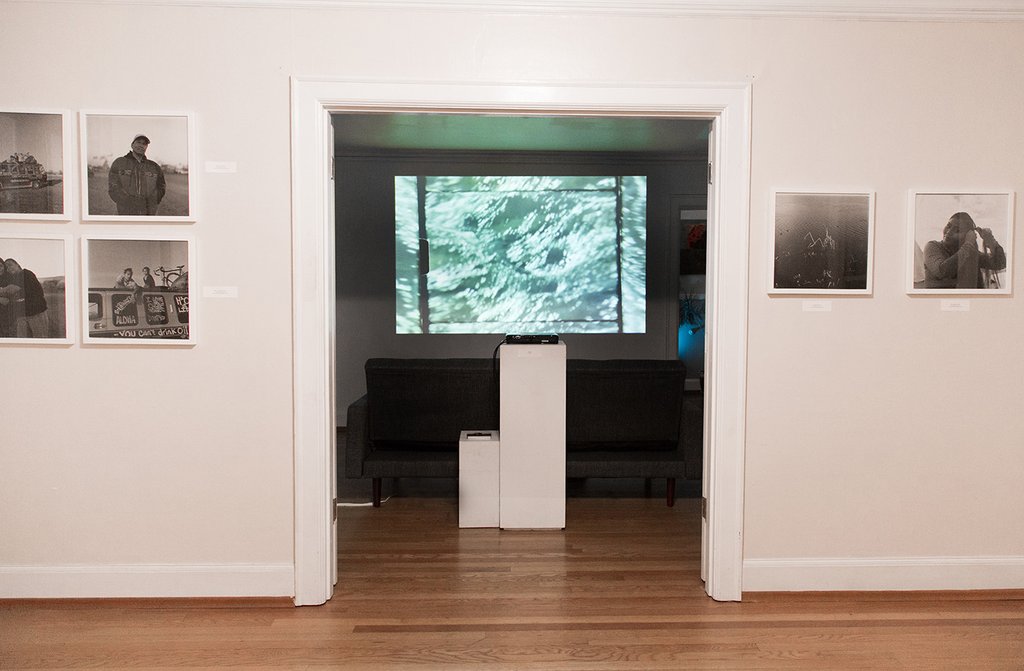
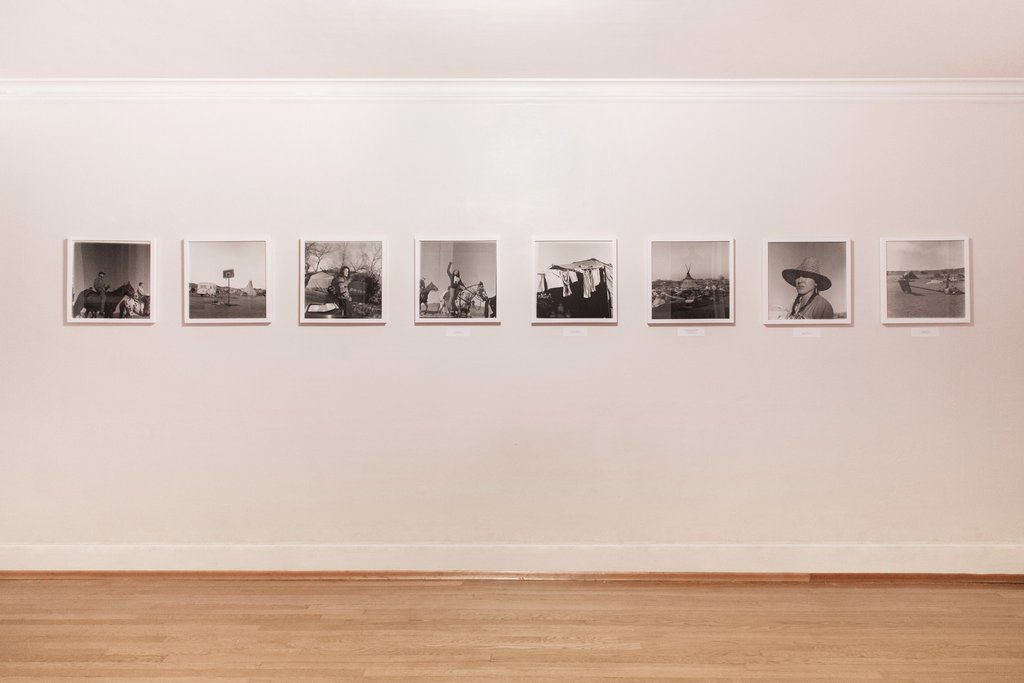
This was where Chantal Anderson had unfolded her record of the conflict at Standing Rock on the walls and windows of Vignettes. I had arrived with only a surface, faceless understanding of the protest, that the Standing Rock Sioux tribe was protecting the cleanliness & sacredness of the river from being threatened by a new route of the construction of the Dakota Access Pipeline.
In the room adjacent to the video, I was given faces. Black and white film photographs lined the walls depicting the perilous landscape of Standing Rock. I found myself meeting eyes with a woman as she braided her hair. I paused with a family on their way to fill a water jug. I observed broken reeds rising above moving water. I found myself transported without having trespassed into this sacred space. Here, Chantal informed me through the gaze of her subjects with careful intention. Her photographs spoke of their trust and permission for me know their stories. I was not a voyeur, instead, the figures in the images arrested me while they conveyed their purpose through the details of their surroundings.
The scenes before me described a truthful nativity that clears notions of the historically reduced, distanced, simplified Native American by situating them within a destabilized norm, one that looks far different than my reality and yet, provides compelling moments of cultural overlap, that once noticed cannot be ignored. The hood of a mustang appears in the edge of one frame, the silhouette of a port-a-potty looms on the horizon in another, placing the figures in the foreground here, not in some far off land but here in our shared world.
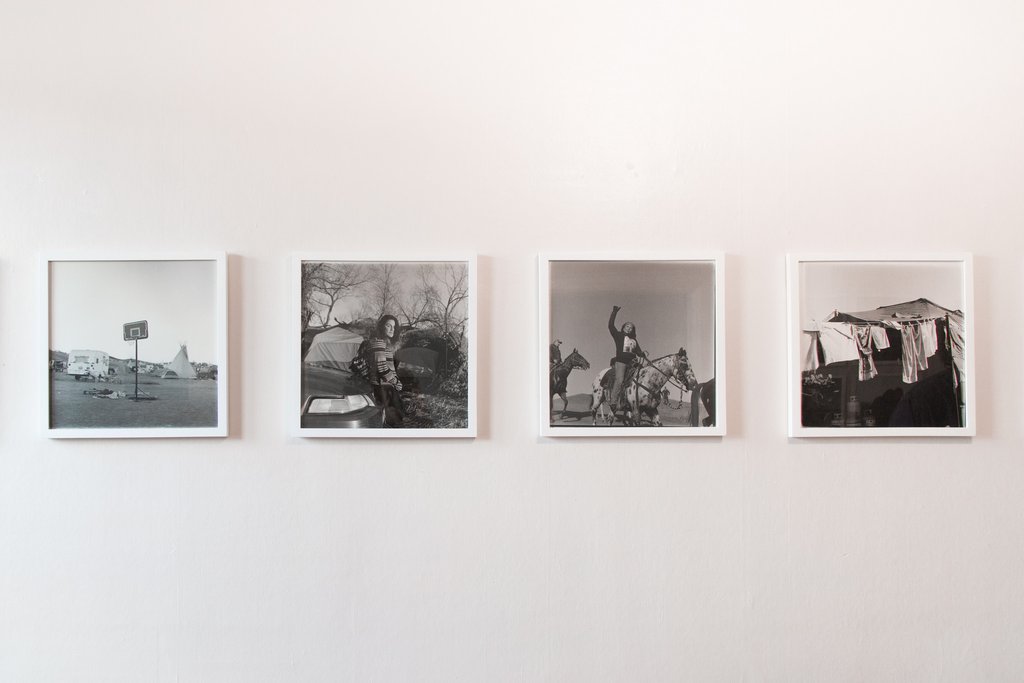
I felt a current of potent sacredness running through her photographs – presenting the rare value of physical purity in an emerging post-truth era that disregards historical promises. This work reminded me that when the core values held by one people is disregarded by another, profanity threatens the roots of our shared humanity, the strength of a foundation and a promise of a shared future. The protest at Standing Rock has been a request for the preservation of human, environmental, religious and historical rights — all stemming from the sacredness of water. Chantal’s aim was to illuminate this by reminding us of its universal value, allowing the river to play it’s many roles throughout the show.
This protest can be seen as the dawn of an awakening. As our nation rediscovers the value of protest, we must sharpen our tongues not only to be heard, but to fill the space created by ignorance with empathy and education. Empathy cannot be reached without first finding understanding. It is not enough to gather, truth must be used to collapse space. Chantal’s work brought each of these elements together, drawing connections that allow their purpose and struggle to become ours, connecting us with the strength of a natural emotional force.
As I left the show, I paused to observe the looping projection of the river, as it shone out into the night from a window above. I saw it as a marquee announcing the presence of a movement maintaining force – slow, constant, and powerful. The sound of the river was still in my ears as I walked up the hill, and then, also, a heartbeat.
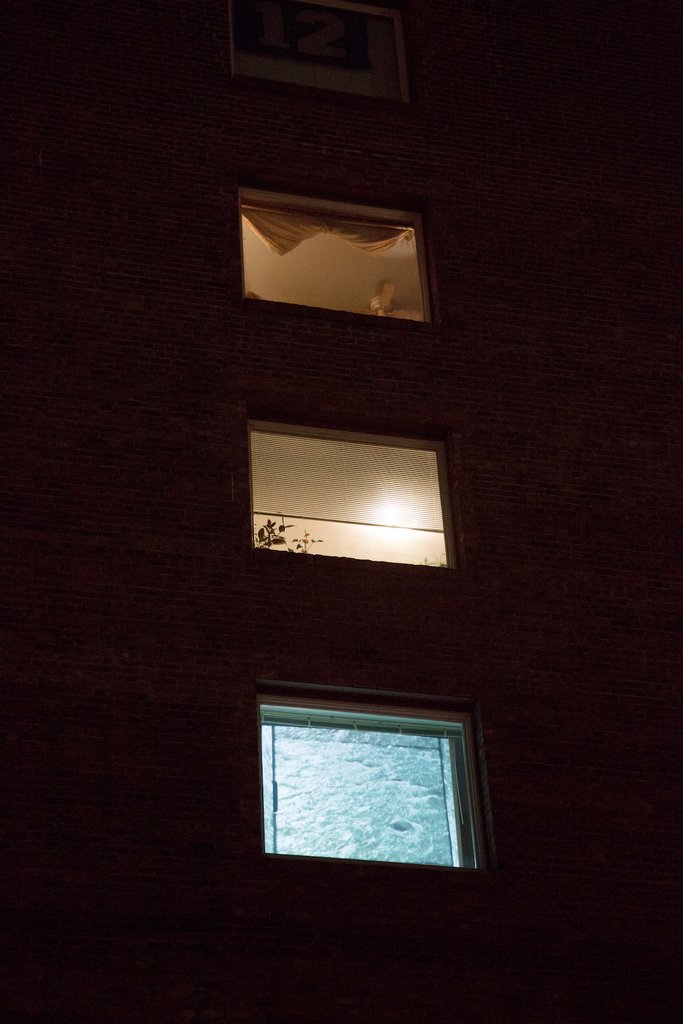
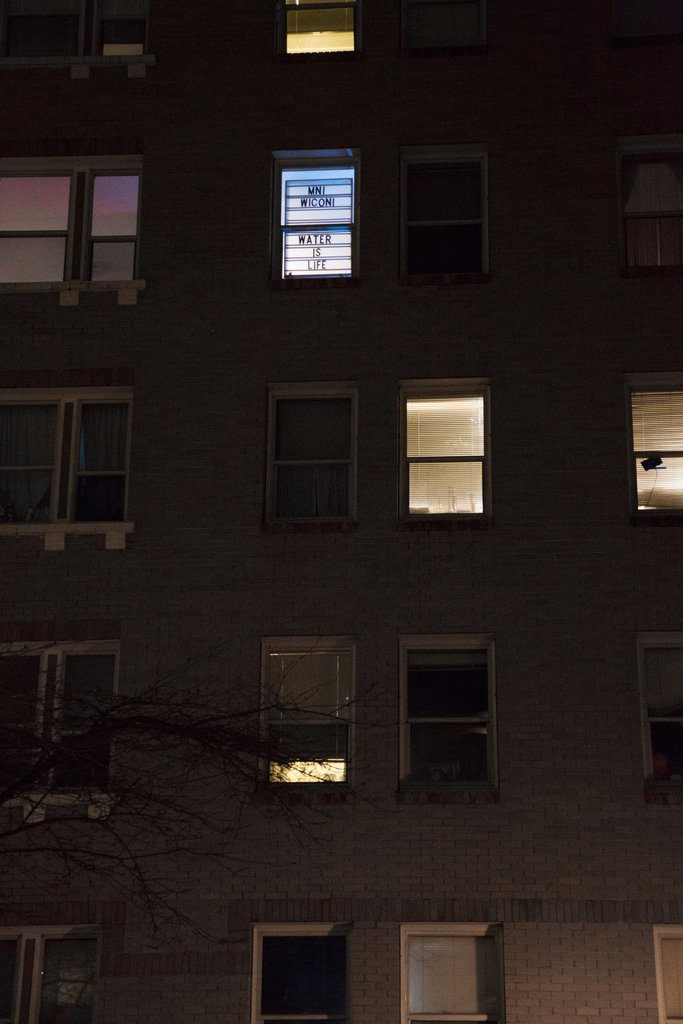
Back to Articles
